In an effort to decorate their plots with gorgeous plants, gardeners are ready to sacrifice time and effort to make their dreams come true. Especially when it comes to large-leaved hydrangea. There’s not much to say about it - it’s an unpretentious shrub, and when choosing a variety for the middle zone, you need to remember that it’s a heat-loving beauty. To survive in our difficult conditions, she will have to create certain conditions.
| Content:
|
Features of large-leaved hydrangea
Large-leaved hydrangea (Нydrangea macrophylla) is a shrub with erect shoots from 0.8 m to 2 m in height.
|
The main advantage of the culture and its difference from other species are the flowers of various shades, collected in large, usually spherical inflorescences with a diameter of 10 cm to 30 cm. |
An important feature of large-leaved hydrangea, or garden hydrangea, is its heat-loving nature. This is the main problem when growing this type of hydrangea in central Russia. Flower buds form in the fall on the current year's stems and cannot withstand frost.
|
For a successful winter, the plant needs shelter, and it is also important to protect it from early autumn frosts and from spring return frosts. |
This condition is not canceled when growing remontant varieties, in which a bud, planted in the spring on a young shoot, blooms in the same year in the second half of summer. Even if the shoot with buds dies in winter, and you have to remove it in the spring, then after such pruning from the axils of the remaining lower part of the old shoot, young shoots of the second order begin to grow, forming flower buds that will bloom in the same year.
Thanks to this property, the duration of flowering of shrubs increases significantly: flowers first form on last year's shoots, and later on branches of the current year. Under unfavorable conditions, when the buds on the old shoots have not blossomed, the stems of the current year make up for their loss.
The best winter-hardy varieties of large-leaved hydrangea for the Moscow region
In the Moscow region, any varieties of large-leaved hydrangea can be grown only by covering the plant for the winter. Even remontant varieties of crops, which are declared as plants with increased frost resistance (up to - 30°C). This value refers to the root system, not the flower buds. They also freeze, like all other varieties. But the bud formed in the spring on the shoot of the current year manages to ripen and bloom by the end of the same season.
Endless Summer
|
A remontant variety that pleases with long-term flowering due to the formation of flowers on the shoots of the previous and current year. In one summer, buds appear 2-3 times. |
- The bush is medium tall, up to 1.5 m, the leaves are dark green, matte, and have denticles along the edges.
- The inflorescences are large, spherical, up to 20 cm in diameter.
- Flowering lasts from June to September.
- Winter hardiness -29°С, zone 4.
The inflorescences change color depending on the composition of the soil: pinkish or purple if the environment is alkaline and pale blue in acidic soil.
Bloom star
|
Representative of the Endless Summer series. The color of the petals is determined by the composition of the soil and can be pink in alkaline soil or blue-violet in acidic soil. |
A location with morning sun and afternoon shade, with moist, nutritious and well-drained soil is suitable for planting.
- The bush is compact, up to 1.2 m high, the veins on the leaf blade are burgundy.
- The inflorescences are spherical, 15-18 cm in diameter.
- Flowering lasts from June to October.
- Winter hardiness -30°C, zone 4.
A distinctive feature of the Bloom star variety is its burgundy-colored shoots. In demand among gardeners in Central Russia, in particular the Moscow region.
Blaumeise
|
The inflorescences consist of small central flowers and large, showy outer flowers, blue or blue in very acidic soils, and violet-pink in alkaline soils. |
The shoots are strong. Prefers a semi-shaded location with well-drained, moist soil.
- The bush is low-growing, 0.9-1.3 m high, the foliage is large.
- The inflorescences are flat, openwork, 10-15 cm in diameter.
- Flowering lasts from July to September.
- Winter hardiness -30°C, zone 4.
Sibilla
|
One of the best varieties, characterized by highly decorative leaves and flowers. Its giant inflorescences, thanks to their glossy shine, resemble finely crafted porcelain figurines. |
Sybil's color can vary from purple to dark pink.
- Bush, up to 1 m high, dark green foliage.
- The inflorescences are large, up to 30 cm in diameter.
- Flowering continues from July to September.
- Winter hardiness -29°С, zone 4.
Looks great in single or group plantings; it can be grown in a container. An excellent choice for the Moscow region.
Tugese (Together)
|
Remontant variety of the You and Me series. At the beginning of flowering, double flowers are light green, then smoothly turn into purple or red and remain that way until the end of flowering. |
Two shades may be present on one plant at once. Prefers nutritious, well-drained soil.
- Spreading bush, up to 1 m high, bright green foliage.
- The inflorescences are large, spherical, up to 25-30 cm in diameter.
- Flowering lasts from June to October.
- Winter hardiness -25°C, zone 5.
Hydrangea Tugese prefers to grow in partial shade. It develops best in moderately moist soil and a place protected from the wind.
Popcorn
|
A variety from the Hovaria series, so named because of the unusual appearance of the flowers. They have round, soft purple petals that look like popcorn. |
Externally, the flowering resembles lilac.
- The bush is low-growing, up to 1 m high, the foliage is matte, dark green.
- Inflorescences with a diameter of 15-20 cm.
- Flowering lasts from July to September.
- Winter hardiness -25°C, zone 5.
The elegant inflorescences of Hopcorn will decorate a flower bed and are harmonious in flower arrangements.
White varieties
Miss Saori
|
A unique remontant variety: white and pink four-tiered star-shaped flowers with a contrasting pink border. Recognized as the best plant of 2014 at the Chelsea exhibition. |
Prefers slightly acidic soils. A wonderful variety for bouquets, patios and gardens.
- The bush is medium-sized, up to 1.5 m high, green foliage takes on dark burgundy shades in the autumn months.
- The inflorescences are spherical, up to 25 cm in diameter.
- Flowering lasts from June to October.
- Winter hardiness -23°C, zone 5.
The Miss Saori variety does not change color due to changes in soil acidity like other varieties.
Lenart White
|
A special feature of the variety is the snow-white color of sterile large petals, small petals are blue and lilac. |
- The bush is medium-sized, 1-2 m high, the leaves are simple, ovate, medium green.
- The inflorescences are large, corymbose in shape, 20-25 cm in diameter.
- Flowering lasts from June to September.
- Winter hardiness -18°C, zone 6.
Requires bending down and covering shoots for the winter.
Blushing Bride
|
Charming snow-white flower caps are set off by dark green foliage. Over time, a light pink tint appears on the snow-white petals, thanks to which the variety got its name - bride's blush. |
- The bush is 1-1.2 m high, the stems are strong.
- The inflorescences are semi-double, up to 15 cm in diameter.
- Flowering lasts from June to September.
- Winter hardiness -23°C, zone 5.
The advantage of the variety is its resistance to chlorosis and other diseases.
Voodoo
|
Snow-white flowers with uniform coloring with jagged edges. When blooming they have a lime tint. Feels good in partial shade. |
- The bush is low-growing, up to 0.9-1 m high, the foliage is dark green and oval in shape.
- The inflorescences are spherical, 20-25 cm in diameter.
- Flowering lasts from June to September.
- Winter hardiness -20°C, zone 6.
The compact, lush bush will perfectly decorate a cozy corner of the garden or in a flowerpot on a patio, terrace or veranda.
Doppio Bianco
|
The remontant variety Doppio Bianco was recognized as the best at the Plantarium 2015 exhibition. White double flowers are collected in lush inflorescences and bloom earlier than others; the flowering period is long. |
- The bush is compact, up to 1 m high, the foliage is green in summer, in autumn leaves appear with colors ranging from yellow to orange.
- The inflorescences are spherical, 10-15 cm in diameter.
- Flowering continues from late May-early June until the end of October.
- Winter hardiness -23°C, zone 5.
Doppio Bianco loves partial shade and moisture.
Red varieties of hydrangea
Alpengluhen
|
Bright red inflorescences give the site a festive look. Stems are straight. On neutral soils, the flowers become dark pink. The more alkaline the soil, the lighter the flowers. |
- The bush is compact, up to 1.5 m high, the foliage is large, bright green, pointed at the ends.
- The inflorescences are large, spherical, 20-25 cm in diameter.
- Flowering continues from July to August.
- Winter hardiness -23°C, zone 5.
Loves acidic soils, partial shade and moisture.
Green Shadows
|
The variety is interesting for its unusual flowers, which are green at the beginning of flowering, then gradually change color to dark red, leaving only the green center and do not fade. The flowers are odorless. Characterized by rapid growth. |
- The bush is low-growing, up to 1 m high, green foliage.
- The inflorescences are dense, spherical, 10-15 cm in diameter.
- Flowering lasts from June to September.
- Winter hardiness -20°C, zone 6.
Suitable for growing in containers and as a houseplant.
Red Baron
|
One of the best varieties of hydrangeas with red inflorescences. The color of the flowers is red, but can change under the influence of increased or decreased soil acidity. Thanks to its beautiful foliage, the variety is decorative even during the dormant period. |
- The bush is compact, up to 1.5 m high, the foliage is large, bright green.
- The inflorescences are spherical, 25 cm in diameter.
- Flowering continues from July to August.
- Winter hardiness -18°C, zone 6.
Valued for its hypoallergenicity, as it has no odor.
Pink Wonder
|
The remontant variety received the name Pink Miracle for its inflorescences of a soft pink hue, the color of which does not depend on the balance of the soil. |
- The bush is compact, up to 0.8 m high, the foliage is green and large.
- The inflorescences are spherical, up to 25 cm in diameter.
- Flowering lasts from July to September.
- Winter hardiness -18°C, zone 6.
Pink Wonder prefers sunny areas and is responsive to watering.
Camino
|
Hydrangea Camino is a charming variety with unusually romantic soft pink inflorescences. The edge of the petals is openwork, and the petals themselves are arranged in 2 tiers. Loves sunny places, but tolerates some shade. |
- The bush is compact, up to 1.1 m high, the foliage is large and green.
- The inflorescences are flat, up to 25 cm in diameter.
- Flowering lasts from July to September.
- Winter hardiness -18°C, zone 6.
Camino's green foliage turns bronze in early fall.
Varieties with blue flowers
Early Blue
|
The remontant variety Early Blue grows slowly and is suitable for containers. The blue flowers are collected in lush inflorescences and turn pink when planted in alkaline soil. |
- The bush is compact, up to 1 m high, large leaves are glossy, dark green, pointed at the edges.
- The inflorescences are spherical, 25 cm in diameter.
- Flowering continues from June to September.
- Winter hardiness -26°C, zone 5.
Hydrangea should not be allowed to remain under the scorching sun for a long time. You should choose a shaded place in the garden.
Freepon
|
The Freepon variety is new. Interesting with dense spherical inflorescences consisting of corrugated petals. At the beginning of flowering the petals are pale blue, but over time the color becomes more intense. |
Grows quickly. Looks great in single and group plantings.
- The bush is medium-sized, up to 1.5 m high, the foliage is bright green.
- The inflorescences are spherical, 20-25 cm in diameter.
- Flowering continues from July to August.
- Winter hardiness -18°C, zone 6.
The color develops gradually, so you can see several tones on one bush.
Peppermint
|
The remontant variety is often chosen by gardeners in the Moscow region. Large and bright two-color caps of inflorescences bloom on the shoots of the current and last year. |
Flowering is long lasting. The shoots are strong. Frost resistance allows you to winter under light shelter.
- The bush is slow-growing, up to 1 m high, the foliage is dark green, dense, glossy.
- The inflorescences are spherical, up to 25 cm in diameter.
- Flowering lasts from June to October.
- Winter hardiness -29°C, zone 4.
Suitable for container growing, patio decoration, flowering borders and borders.
Forever and Ever
|
A series of remontant varieties, distinguished by different colors. Flowering is abundant on shoots from last year and this year. |
In the conditions of the Middle Zone, it requires shelter for the winter. Suitable for both single planting and for creating compositions.
- The bush is medium tall, up to 1 m, the leaves are large, ovate, dark green.
- The inflorescences are large, spherical, up to 30 cm in diameter.
- Flowering continues from June until late autumn.
- Winter hardiness -23°C, zone 5.
The plant surprises with the presence of inflorescences of different shades on one bush.
Ever Blue
|
The remontant variety is distinguished by its early onset of flowering. Blooms on shoots of last and current year. |
The inflorescences have a unique dark blue color, which fades to deep blue and purple during flowering.
- The bush is low-growing, up to 1 m high, the foliage is bright green.
- The inflorescences are spherical, 15-20 cm in diameter.
- Flowering continues from late July until frost.
- Winter hardiness -29°C, zone 4.
The variety is suitable for growing in the Moscow region with shelter.
Planting and caring for large-leaved hydrangea
A gardener who decides to plant large-leaved hydrangea must take into account the peculiarities of growing and caring for the crop.
Choosing a location is the first stage of planting a seedling. The shrub requires 6 hours of sunlight, but not under the scorching sun, but preferably at the beginning or end of the day.
Due to the fragility of the roots, it is advisable to buy seedlings with a closed root system. It is better to plant hydrangeas in the spring, when a constant positive temperature has established.
Planting technology:
- The distance between seedlings is at least 1 m.
- The planting pit is prepared with dimensions of 40x40x40 cm or in proportion to the root system.
- To fill the hole, prepare a mixture of turf, leaf soil and sand in equal proportions. The soil mixture can be diluted with peat, humus and pine needles.
- The plant with a lump of earth is placed in the center of the planting hole, sprinkled with prepared soil, and compacted.
- The young seedling is watered abundantly, and the tree trunk circle is mulched with peat with the addition of compost in a layer of 7-10 cm.
Watering
|
Water the bush regularly throughout the season. The pH of water for irrigation should not exceed 5.5. |
To maintain the required level of moisture around the root system, some gardeners practice using hydrogel. This technique will help the soil stay moist longer even with irregular watering. Hydrogel balls are added during planting or later to the tree trunk circle.
Top dressing
Large-leaved hydrangea is fertilized three times a year:
- in the spring after wintering to activate the forces for vegetation;
- before bud laying, in mid-June;
- two weeks after the start of flowering.
Coniferous soil, pine bark or dried needles are used for fertilizer.
Trimming
After planting, formative pruning is not carried out for 3 years. A young plant needs time to grow.
If necessary, in April, sanitary treatment should be carried out and dried and frozen branches should be removed.
It is better to trim the inflorescences in the spring; old flowers will serve as additional shelter for the flower buds from frost.
In remontant varieties, you can shorten all branches to 2-3 buds.
The number of removed branches should not exceed 1/4 of the total number of shoots.
Wintering and sheltering large-leaved hydrangea
In mid-September, all lower leaves are removed; with the onset of the first cold weather, leaves are removed to the middle of all branches.
To protect the shrub from excess moisture during the rainy season, make a cover of plastic film so that the hydrangea goes to winter with a moderate water content in the soil and with a dry crown.
At the end of October, before the onset of night frosts, the bushes are mulched with peat, one bucket per bush, a hill is formed and slightly compacted.
|
With the onset of persistent cold weather, the branches are bent to the ground and fixed with metal brackets, covered with spruce branches. |
A layer of breathable covering material is placed over the spruce branches, which, in turn, is covered with dry litter.
The topmost layer is made waterproof, for example, plastic film. The final stage is carried out when stable cold weather sets in. For ventilation, small holes are left, which should be covered during severe frosts and opened with the onset of above-zero temperatures in winter.
In spring, you cannot suddenly remove the shelter - temperature changes are detrimental to flower buds. The layers are removed gradually in April, depending on the weather. You can leave shrubs without shelter if the weather with positive temperatures has settled.
Don't forget to read:
Read more about planting and caring for large-leaved hydrangea in open ground and in pots here ⇒
Conclusion
When choosing a variety for cultivation in central Russia, it is necessary to take into account the winter hardiness of the crop, choose plants that are not only beautiful, but also those most adapted to specific regions and unfavorable winter conditions.
Other articles about hydrangeas:
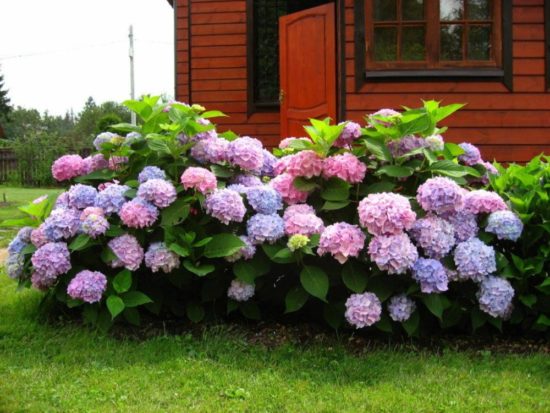
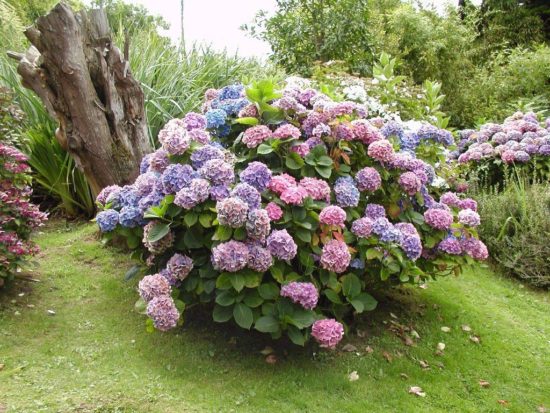
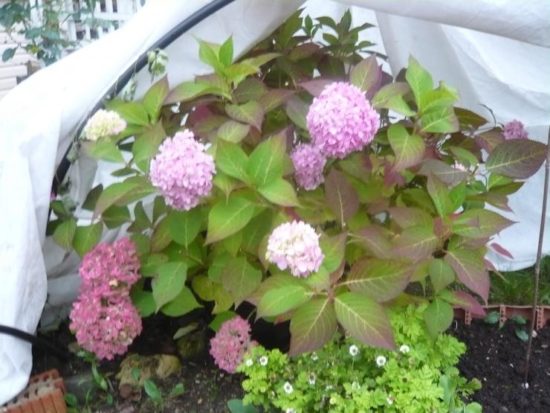
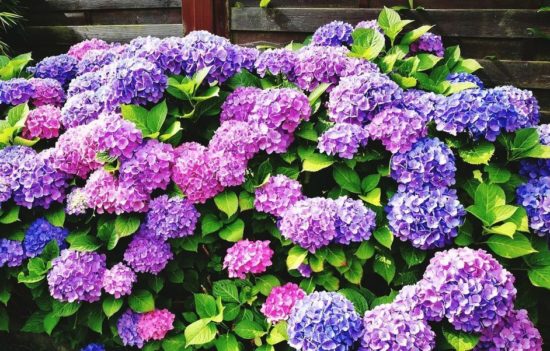
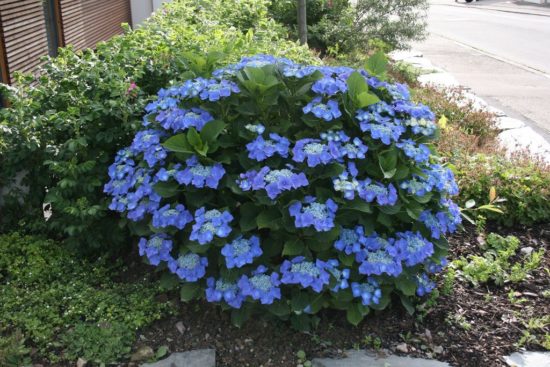
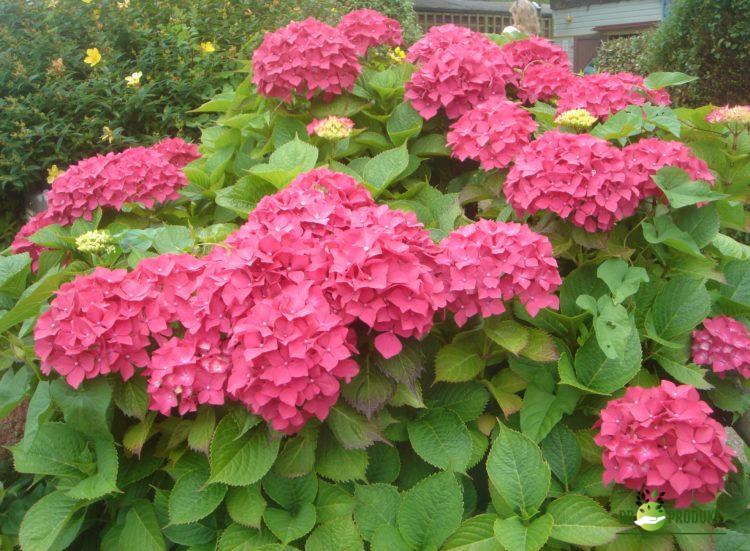
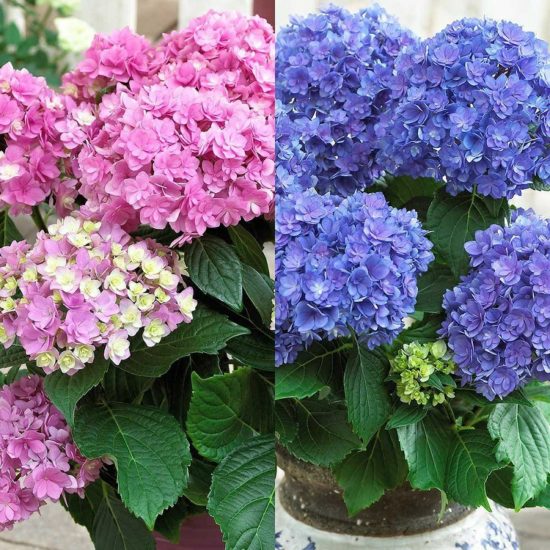
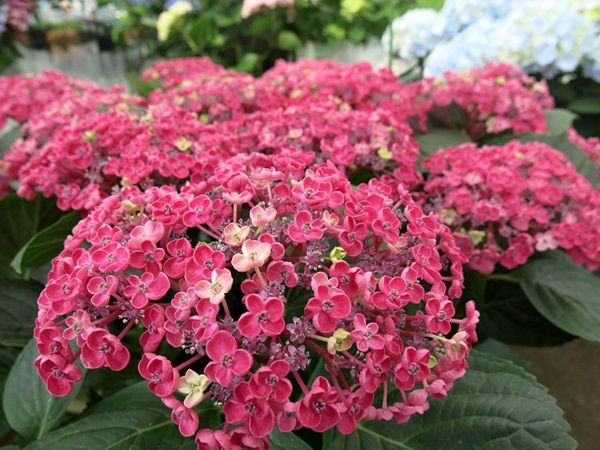
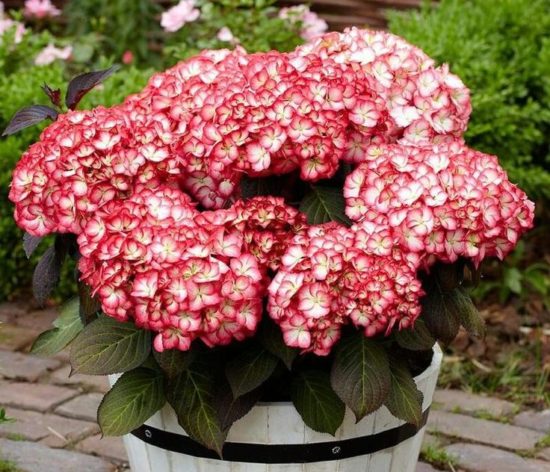
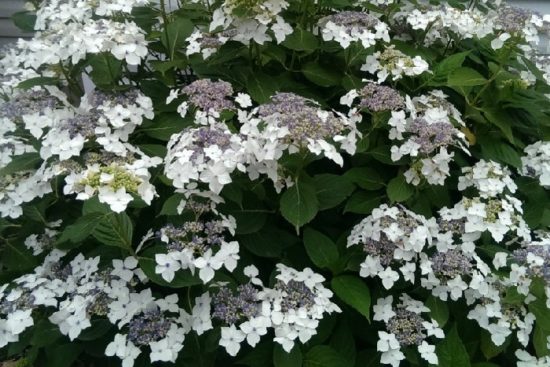

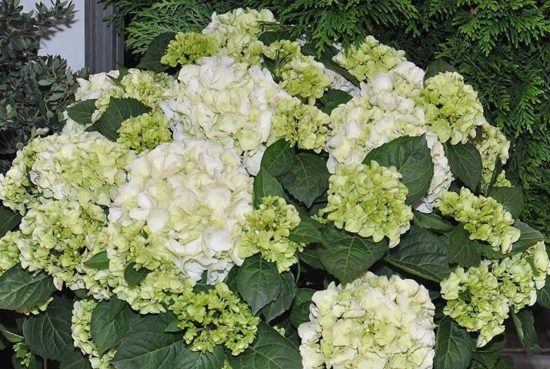
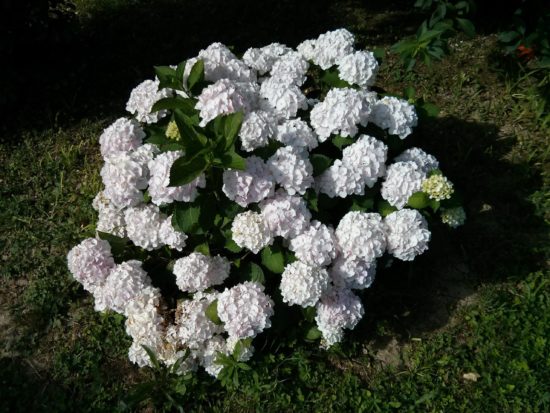
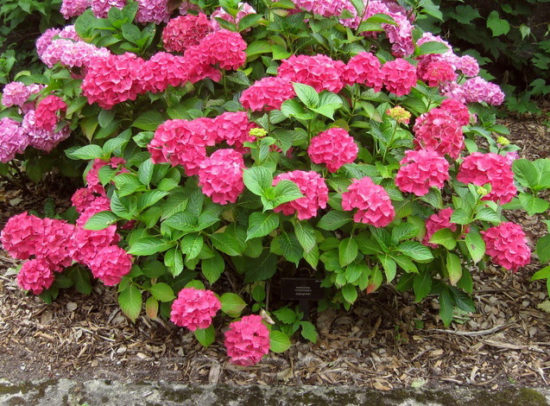
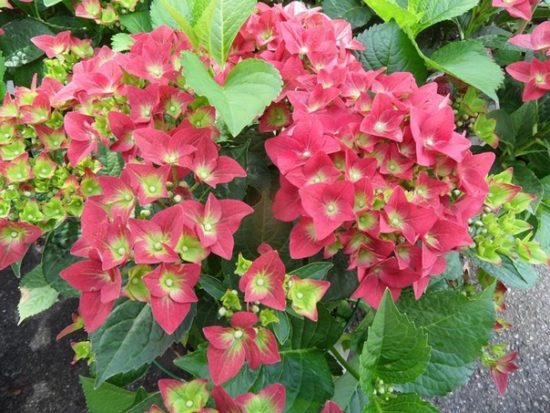
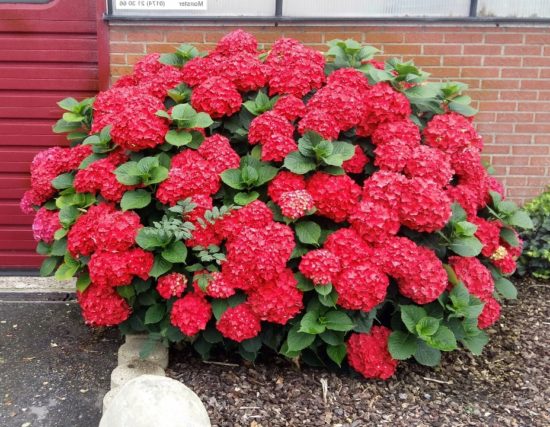
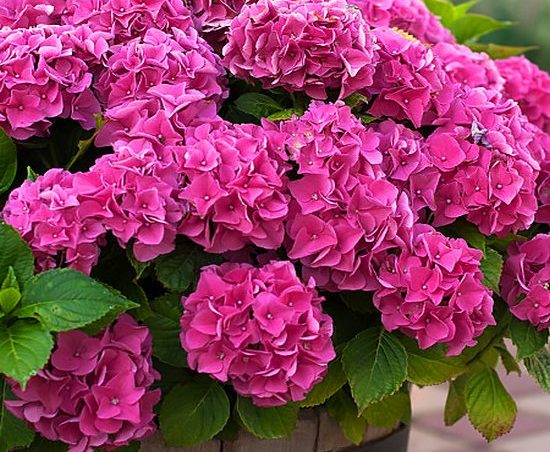
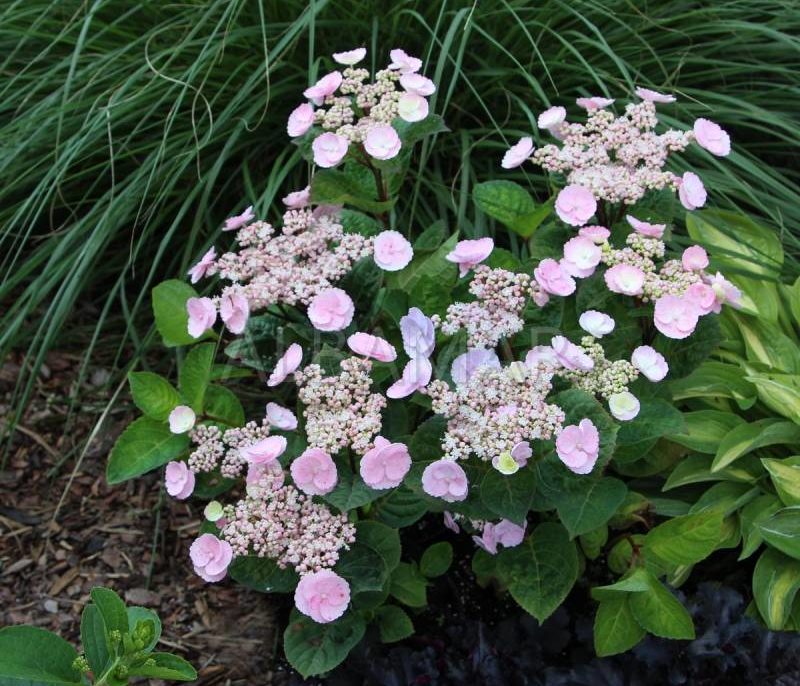
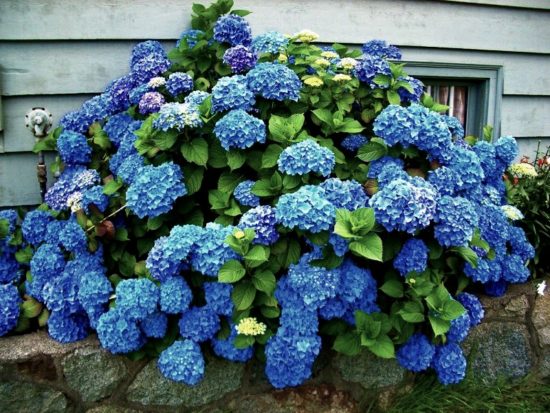

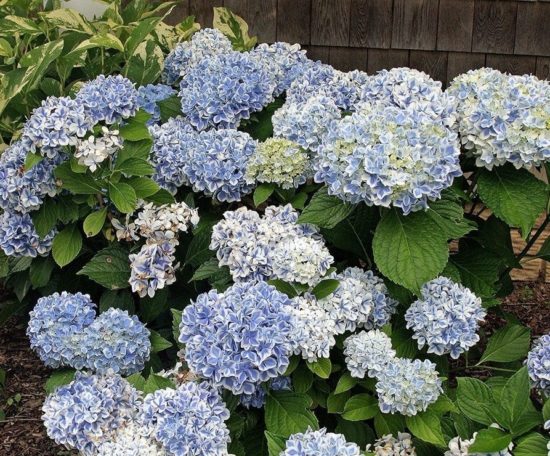
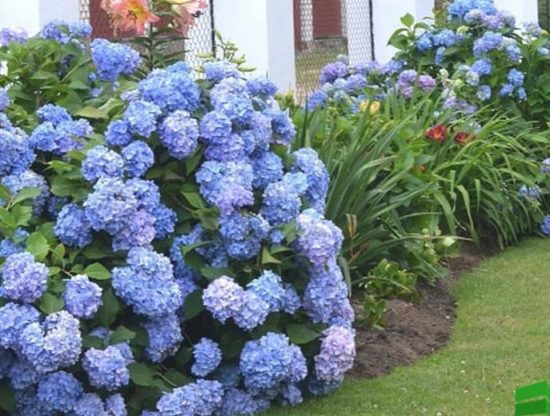
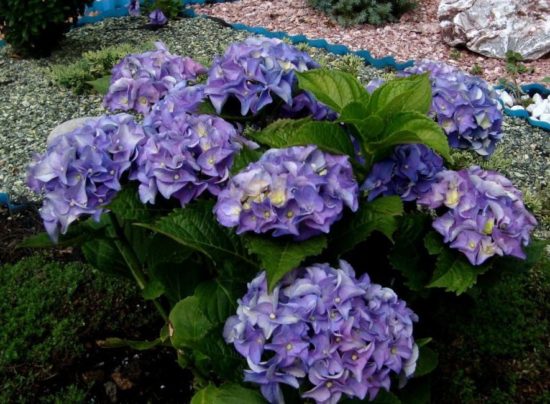
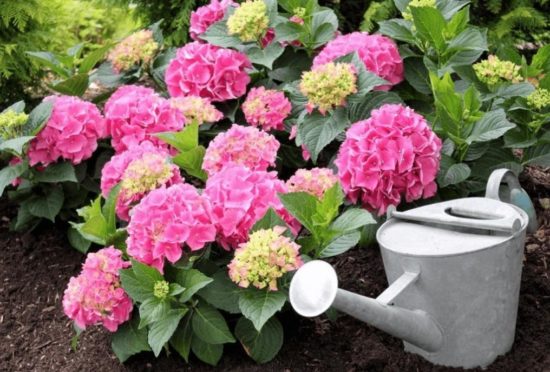
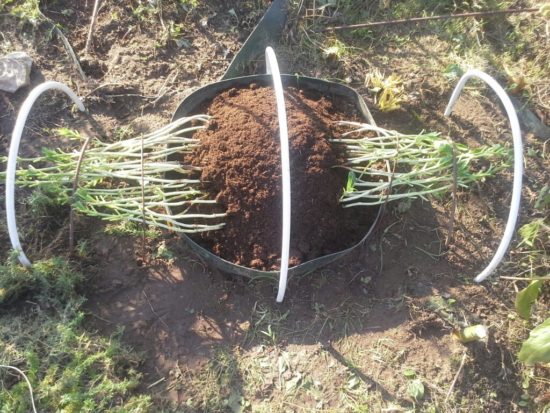



 CUCUMBERS NEVER GET SICK, I'VE BEEN USING ONLY THIS FOR 40 YEARS! I SHARE A SECRET WITH YOU, CUCUMBERS ARE LIKE THE PICTURE!
CUCUMBERS NEVER GET SICK, I'VE BEEN USING ONLY THIS FOR 40 YEARS! I SHARE A SECRET WITH YOU, CUCUMBERS ARE LIKE THE PICTURE! You can dig a bucket of potatoes from each bush. Do you think these are fairy tales? Watch the video
You can dig a bucket of potatoes from each bush. Do you think these are fairy tales? Watch the video
 How our fellow gardeners work in Korea. There is a lot to learn and just fun to watch.
How our fellow gardeners work in Korea. There is a lot to learn and just fun to watch. Eye trainer. The author claims that with daily viewing, vision is restored. They don't charge money for views.
Eye trainer. The author claims that with daily viewing, vision is restored. They don't charge money for views. A 3-ingredient cake recipe in 30 minutes is better than Napoleon. Simple and very tasty.
A 3-ingredient cake recipe in 30 minutes is better than Napoleon. Simple and very tasty. Therapeutic exercises for cervical osteochondrosis. A complete set of exercises.
Therapeutic exercises for cervical osteochondrosis. A complete set of exercises. Which indoor plants match your zodiac sign?
Which indoor plants match your zodiac sign? What about them? Excursion to German dachas.
What about them? Excursion to German dachas.